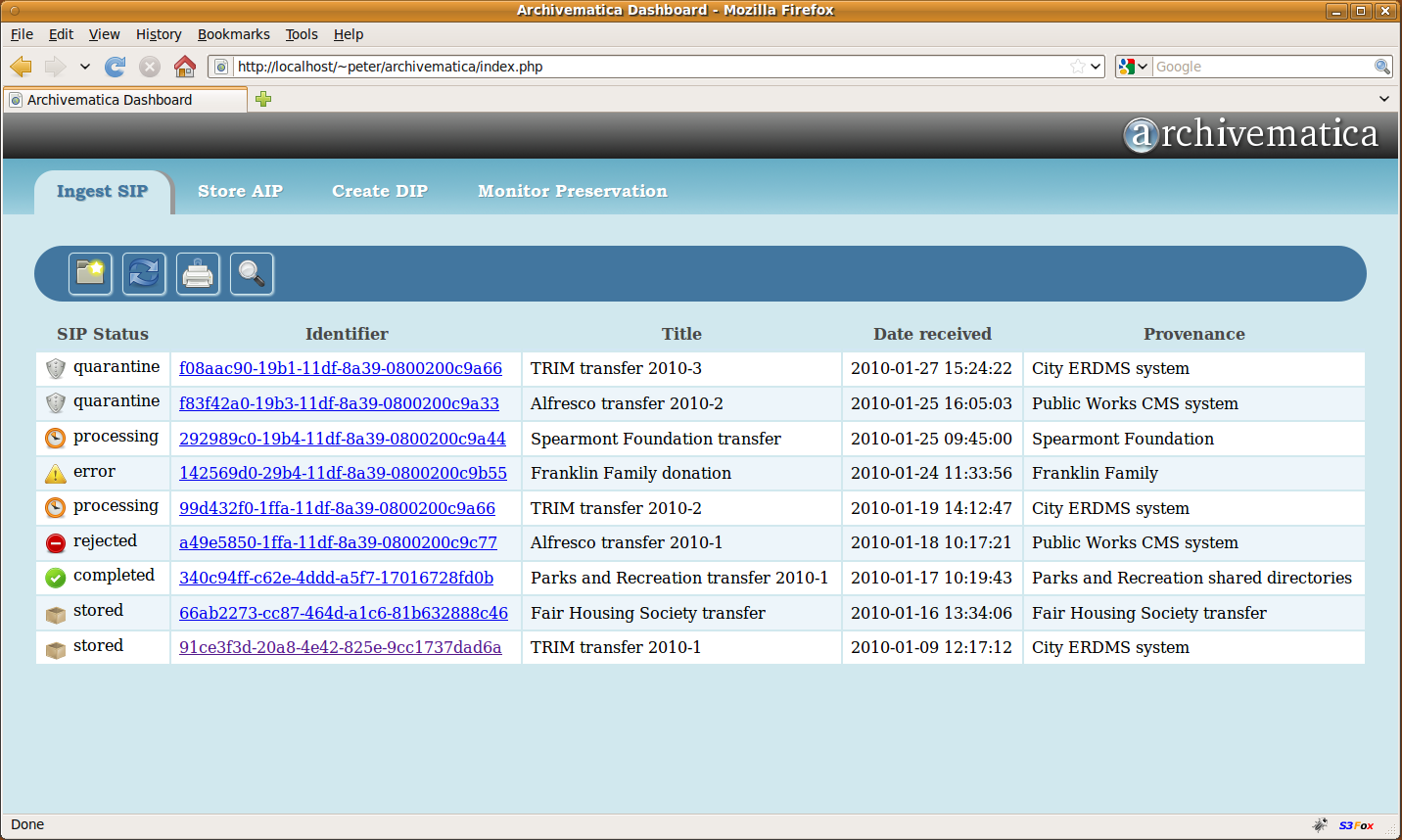Difference between revisions of "Dashboard"
Jump to navigation
Jump to search
| Line 37: | Line 37: | ||
*One other implementation option we've discussed is having Archivematica publish a RSS/Atom feed that the Django app reads. | *One other implementation option we've discussed is having Archivematica publish a RSS/Atom feed that the Django app reads. | ||
| − | 2) Interact with the the Archivematica API: | + | 2) Provide notification of errors |
| + | * Can deduce from values in the Tasks table whether an error output has occured | ||
| + | * Will need to backtrack to MCP Task config XML file to identify the Error output directory where the files that incurred the error will be sitting | ||
| + | |||
| + | 3) Interact with the the Archivematica API: | ||
#getListOfJobsAwaitingApproval | #getListOfJobsAwaitingApproval | ||
#approveJob | #approveJob | ||
Revision as of 17:08, 17 November 2010
Main Page > Development > Development documentation > Dashboard
Design
This page proposes a new feature and reviews design options
Development
This page describes a feature that's in development
Documentation
This page documents an implemented feature
Technical Requirements
The Dashboard is a web-based tool that is developed using Python-based Django MVC framework.
Functional Requirements
- provide a web-based, multi-user interface that will report on the status of system events and make it simpler to control and trigger specific micro-services.
- provide a user-friendly interface to add/edit metadata
- coordinate the read and write operations of the AIP to file storage and the syncing of metadata updates between the AIPs and the access system.
- process Consumer AIP requests
- provide statistical information about Archivematica operation
- provide preservation planning information
Release 0.7-alpha
1) Provide updates on the Archivematica processes by reading rows from the MCP 'Task' table in its MySQL dbase.
- This will likely have to happen through some kind of polling by the Django app of the MySQL database.
- One other implementation option we've discussed is having Archivematica publish a RSS/Atom feed that the Django app reads.
2) Provide notification of errors
- Can deduce from values in the Tasks table whether an error output has occured
- Will need to backtrack to MCP Task config XML file to identify the Error output directory where the files that incurred the error will be sitting
3) Interact with the the Archivematica API:
- getListOfJobsAwaitingApproval
- approveJob
- i.e. at certain stages in the Archivematica workflow we will stop and await the explicit approval from an archivist to trigger the next series of Archivematica tasks. So somewhere in the Django Dashboard there will be a list of jobs awaiting approval (retrieved from the Archivematica API) and then the ability for an archivist to click a button thereby approving a job and notifiying Archivematica MCP of that action (again, via the Archivematica API).
Post release 0.7-alpha
- create Accession Record & add appraisal metadata via Dashboard
- API:
- listActiveTasks
- taskCompleteNotification
- list/search AIP locations on archival storage (ideally a URI but will depend on chosen storage platform)
- sync access system metadata updates with matching metadata elements in AIP's METS.xml
- process AIP request
- preservation monitoring
- list format types in storage
- link to media-type preservation plans (URI starting with wiki-page can evolve to RDF registry)
- notify when preservation actions required for format types
- solr index
User interface
Early mockup (March 2010)
